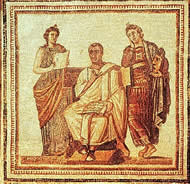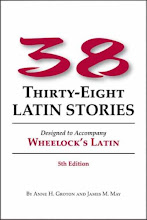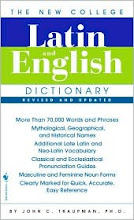
In physical build up, the United States Supreme Court retains many Ancient Roman qualities. For one, a Roman figure carrying a fasces appears above the words, "Equal justice under law". Along with similar architecture (with columns, etc.), there are two 17 feet high bronze doors at the entrance to the court. Each door holds four scenes that illustrate significant events in the evolution of justice in the Western tradition. The first 4 of these (the entire left door) have scene related to the Ancient Rome. They are: (1) Shield of Achilles, (2) Praetor's Edict, (3) Julian and Scholar, (4) Justinian Code. Bronze doors were created for Rome's most important secular and religious sites, including the Roman Senate and the Pantheon. Classical forms, associated with Roman Republicanism, embodied the ideals and goals of the new nation (United States), and so were used extensively in important government buildings. To the left side of the building, there is the statue, "The Contemplation of Justice", which depicts a seated woman holding a small figure representing justice. This can trace back to Themis, the Greek goddess of justice and law, and Justicia, one of the four Roman virtues depicted in the form of a woman. Other symbols on this statue represent fairness, equality, and impartiality.
Roman law is one of the most significant influences on American law. Even some individual justices were interested heavily in Roman law, often citing it. In states such as Florida and Texas, this influence was extremely dominant, as they once under civil law systems. Roman law has been a peripheral, or backdrop, of American common law. One specific influence is that Roman and civil law provided a model of systematic legal structure, especially in organizational and conceptual framework. Second, Roman law provided precise vocabulary for complex legal concepts. Third, and most importantly, Roman law provided comparative materials for judging American rules, as well as historical substrata, upon which many English and American rules rest.







